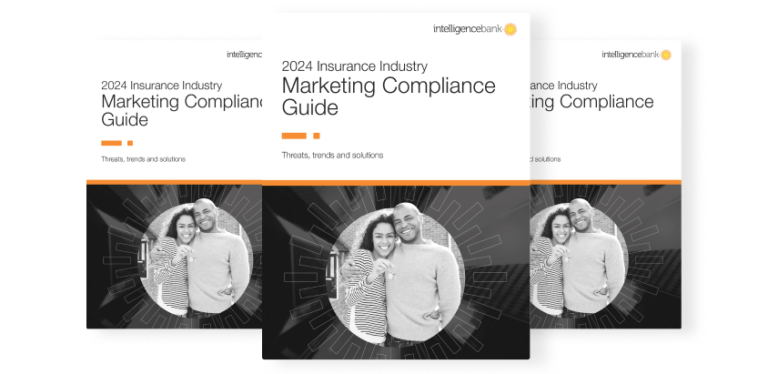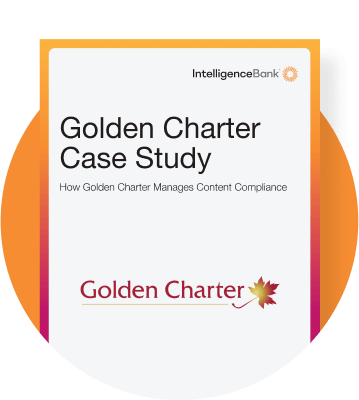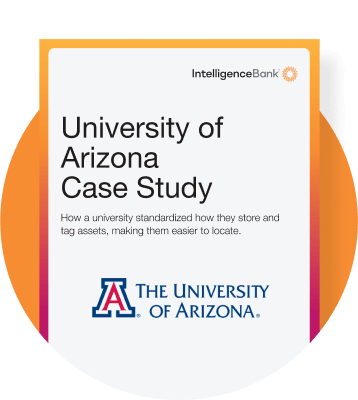2024 sees insurance marketers making significant adjustments to their strategy and tactics. The most visible changes are partly driven by altered media spending patterns and the knock-on effects that has on content, and partly driven by leaner marketing teams. However, amidst this evolution, there is one constant yet shape-shifting challenge – navigating the evolving web of regulatory marketing compliance.
Insurance marketing, as any insurance marketer worth their salt will tell you – is subject to stringent government regulations. It’s aimed at protecting consumers and ensuring fair competition within the industry. In the US, for example, insurance marketing is regulated by state insurance departments as well as federal agencies like the Federal Trade Commission (FTC) and the Consumer Financial Protection Bureau (CFPB). Insurance marketers in Australia must comply with regulations set forth by the Australian Securities and Investments Commission (ASIC) and the Australian Competition and Consumer Commission (ACCC). The same goes for Canada, the U.K. and most other parts of the world. Each country and territory has its own set of laws and regulatory bodies that oversee insurance marketing practices.
Complex marketing compliance regulations can weigh down the content creation process, and ultimately, prevent brand and legally approved content from launching as fast as it otherwise could. Delays to market spell ‘missed opportunities’, while taking a more ‘relaxed’ approach to obtaining approvals is likely to result in compliance errors with disastrous ramifications.
That’s why we have produced the 2024 Insurance Industry Marketing Compliance Guide. It’s free to download and will help you understand current and future threats and trends, as well as operational solutions for insurance marketing teams.
The Basic Challenges Around Insurance Marketing Compliance
Staying compliant with marketing regulations is not just a regulatory obligation but also a crucial aspect of maintaining trust and credibility with customers. This is particularly true for the insurance industry. With the ever-evolving regulatory frameworks in the U.S., the U.K., Canada, and Australia, insurance companies are under increasing pressure to ensure their marketing materials meet stringent standards.
Keeping pace with regulatory updates over multiple jurisdictions, and diverse marketing channels poses significant challenges for insurance marketers. Failure to comply with advertising regulations can result in hefty fines, reputational damage, and legal liabilities that undermine insurers’ credibility and erode consumer trust.
Details on current trends and threats can be found in our guide, but here’s a top line on some of the fundamental factors surrounding insurance marketing compliance.
Steep penalties for non-compliance
In February this year, federal regulators secured a nine-figure judgment against a large insurer over non-compliant marketing practices. Add to that a six-year legal battle and you have a cost that runs into the hundreds of millions. And that doesn’t even factor in reputational damage. While this fine was notably steep, other organizations faced fines, some of which ran into the tens of millions.
Developments in monitoring and enforcement
Compliance has always been an ongoing process that requires constant monitoring and enforcement to detect and address potential violations. However as our guide explains, emerging technology is being employed by government regulators to more thoroughly track any compliance infringements. So while marketing compliance audits have always been par for the course, now more than ever, insurance marketers must implement robust monitoring systems and protocols to identify non-compliant practices and take corrective action promptly.
Balancing innovation with marketing compliance
The insurance market is highly competitive and staying ahead often means offering more than just traditional insurance products. Many insurers are expanding their portfolios to include a wide variety of aligned services. While this aims to provide added value and meet the evolving needs of customers, diversification can lead insurance marketers into an entirely new realm of regulatory complexity that extends beyond the scope of their professional expertise. Often these new areas are within themselves highly regulated industries. This contributes additional layers to an already challenging matrix of marketing compliance.
Marketing compliance extends to social brand ambassadors
Social media influencer marketing has become an integral component of the insurance industry’s marketing toolkit. It has reshaped the way insurance marketers engage with current and prospective clients and enable meaningful discussions on insurance-related topics.
Influencers play a pivotal role in shaping consumer behavior and driving engagement. Insurance marketers are increasingly collaborating with them in ways that foster trust, and create authentic reviews and endorsements. However, as our guide details, while this activity offers several advantages, there are potential pitfalls to navigate.
Marketing resource constraints
Compliance efforts require significant resources, including time, personnel, and financial investment. While smaller insurance companies and startups can face challenges in allocating sufficient resources to compliance initiatives, large organizations are not immune to shrinking resources. When this area is underfunded there is a greater potential for regulatory vulnerability.
Marketing compliance rules are always changing
Due to product and service developments, innovative marketing methods, new media channels and world events, insurance marketing compliance regulations are continually being updated.

Why is Insurance Marketing Compliance Becoming More Complex?
Our guide expands on why it is becoming more challenging to maintain the complex assortment of compliance regulations in insurance marketing. But in short, it’s a combination of three main factors:
1. Insurance marketing compliance rules are ever-changing
Insurance marketing rules are subject to constant change due to several factors:
- Regulatory updates
Regulatory authorities continually review and update insurance marketing rules to adapt to market dynamics, consumer needs, and emerging risks. These updates may be driven by legislative changes, court rulings, or regulatory guidance aimed at enhancing consumer protection, promoting fair competition, or addressing new challenges in the industry.
- Market innovation
The insurance industry is continuously innovating to meet changing consumer demands and technological advancements, as well as emerging opportunities and risks. New products, distribution channels, and marketing strategies may require adjustments to existing regulations or the development of new rules to ensure they align with regulatory objectives and safeguard consumer interests. - Consumer protection
Regulatory changes in insurance marketing always prioritize consumer protection by addressing issues such as transparency, fairness, and the prevention of deceptive or misleading practices. As consumer expectations evolve and new concerns arise, regulators may introduce stricter rules or enhanced disclosure requirements to enhance consumer trust and confidence in the insurance marketplace.
- Globalization
In an increasingly interconnected world, insurance marketers are operating across multiple jurisdictions. Regulatory authorities may collaborate internationally to harmonize insurance marketing rules, promote consistency, and facilitate cross-border enforcement. These efforts may lead to changes in domestic regulations to align with international standards or agreements.
- Technological advancements
The digital transformation of the insurance industry has introduced new marketing channels, such as social media, digital advertising, and data analytics. Regulators update rules to address privacy concerns, data security risks, and the use of emerging technologies in insurance marketing, ensuring compliance with applicable laws and regulations.
2. The rapid pace of campaign cycles
All aspects of the insurance industry run at a much faster pace than even five years ago. Marketing is no exception.
- Increased pressure
Content cycle speed places huge pressure on insurance marketers to deliver assets quickly and efficiently. The volume and tight deadlines impact campaign planning, execution, and evaluation, often with limited marketing resources and time.
3. Increased content demands
Media buying habits, fragmented audiences and ease of production are driving up the number of creative assets required for campaigns exponentially.
- Resource allocation challenges
The rapid turnover of campaigns requires effective resource allocation if insurance marketers are to consistently meet regulatory compliance laws. Marketers must allocate budget for either manpower or technology to make this happen.
- Risk Management
The high number of assets going to market increases the risk of errors and oversights. As well as the high turnover of creative assets, insurance marketers in particular need to be constantly aware of ‘always on’ assets such as web pages and collateral that need to be periodically assessed for compliance risk.
Further reading on issues complicating insurance marketing compliance and resourcing can be found in our guide.
Failure to Uphold Insurance Marketing Compliance Rules
Insurance marketers have a responsibility to ethically promote services and products that serve the best interests of their clients. Any misrepresentation or inaccurate detail can financially devastate the insured party, or worse, impact health outcomes. This is why regulatory bodies take rigorous action when any breach occurs.
Whether you are a new entrant in the market or are an established organization, compliance regulators do not discriminate. Ignoring or misinterpreting the rules can lead to serious and often crippling consequences. Inadvertent mistakes and minor oversights are little defence against regulatory action.
While huge fines and sanctions have immediate material impacts on the business, the resulting reputational damage can take years to recover from.
How to Control Insurance Marketing Compliance
Marketing compliance can slow down creative development if the right resources and systems are not in place.
As content demands continue to rise, asking for additional staff to manage the inventory is neither likely to occur nor is it efficient. The alternative, i.e. taking shortcuts on compliance is, for all the reasons we’ve outlined in our guide, simply not an option. The reality is mistakes so easily occur when your team lacks an efficient workflow tool. A solid system streamlines compliance and prevents delays in delivering legally approved content.
The emergence of marketing compliance workflow tools that leverage AI, automation and good old-fashioned logic empowers insurance marketers to improve marketing effectiveness and manage changing compliance requirements. By streamlining briefing, markups, approvals, and asset centralization, they offer visibility, audit trails and reporting features for transparency and accountability.
This not only enhances efficiency but also allows teams to focus on strategic, high-value initiatives.

Simplify the Complex
In response to compliance challenges, adopting marketing compliance software is a game-changer. In this comprehensive guide, we delve into its significance as it relates to the insurance industry, focusing on data-supported trends, real-life examples of threats, and practical solutions.
Insurers who embrace marketing compliance software not only ensure adherence to regulatory requirements but also increase overall speed in getting approved content out the door. As well as this, it encourages a culture of innovation and efficiency and makes it easy for all stakeholders to do the right thing.
Need more information on any of these new features? Contact Us for a demo.





